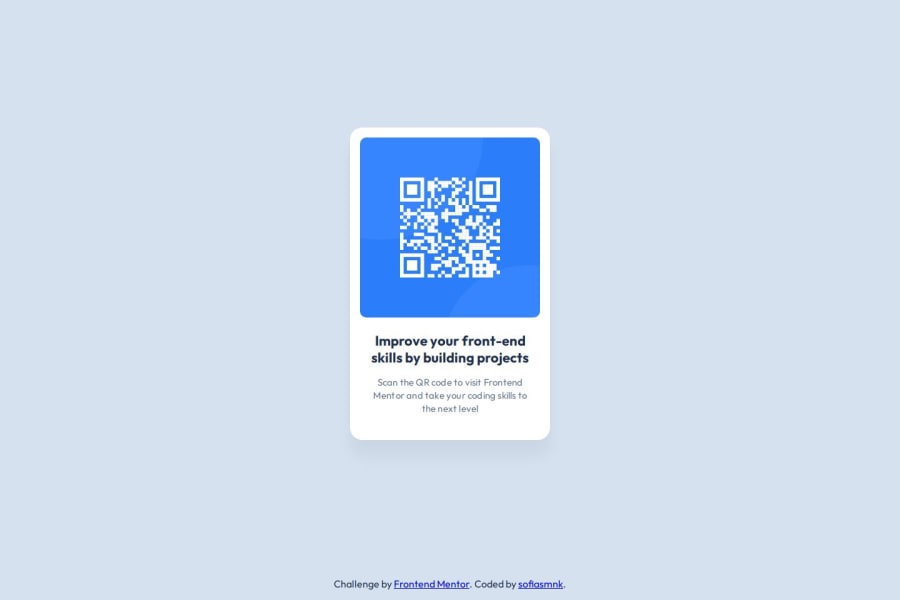
QR Code challenge using custom properties, grid and flexbox
Design comparison
Solution retrospective
The biggest challenge was getting more used to using git. I was happy to find out how easy it is to create a new Github repo from a local one using the gh repo create command from the Github CLI. But, I was also testing out the GitButler git client/GUI and it was a bit confusing, I'm not sure I'll use it next time.
There were some decisions about how to write the CSS that were difficult to make with the challenge being just one component in isolation without the rest of a website around it as context. I tried to imagine there was a whole website that I wasn't seeing, but I'm not sure I succeeded at that.
What specific areas of your project would you like help with?Is it semantic to use a element for the card, or would it be better off as a generic?
Community feedback
Please log in to post a comment
Log in with GitHubJoin our Discord community
Join thousands of Frontend Mentor community members taking the challenges, sharing resources, helping each other, and chatting about all things front-end!
Join our Discord
